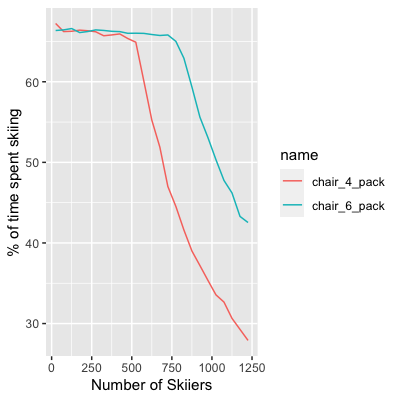
AI, agents, databases, and serverless at AWS. Views are my own.
4 subscribers
How to get URL link on X (Twitter) App


https://twitter.com/namiazad/status/1877553653336174782That means DSQL gets strong consistency and isolation for all readers and writers, and no data is lost on region failure.



 The pivot between the blades (plastic ☹️) broke and was lost. No matter! We can take out some Aluminium round, turn it to the right size, tap it to M3 (that's 3mm, around 1/8") and combine it with a little screw. M3 isn't so tiny as taps go, but still feels fragile.
The pivot between the blades (plastic ☹️) broke and was lost. No matter! We can take out some Aluminium round, turn it to the right size, tap it to M3 (that's 3mm, around 1/8") and combine it with a little screw. M3 isn't so tiny as taps go, but still feels fragile. 



https://twitter.com/MarcJBrooker/status/1573109939475816450Erlang spent a big part of his career thinking about how to apply statistics to the behavior of telephone networks. Given a certain amount of capacity, how many customers can this telephone system serve? As our customer base grows, how will the quality of service they get change?

https://twitter.com/MarcJBrooker/status/1571135391230742528
 Note how SI is only sensitive to write set sizes (|W|), because it cares only about write-write conflicts. Serializability is sensitive to both read (|R|) and write set sizes, because it cares about read-write conflicts.
Note how SI is only sensitive to write set sizes (|W|), because it cares only about write-write conflicts. Serializability is sensitive to both read (|R|) and write set sizes, because it cares about read-write conflicts.

 What the histogram shows us is that there's a strong mode somewhere just above zero, and another around 2.6ms. So far so good, it's easy to read this off the histogram.
What the histogram shows us is that there's a strong mode somewhere just above zero, and another around 2.6ms. So far so good, it's easy to read this off the histogram.

https://twitter.com/jonathaneyer/status/1560122825553260545The trick is in the definitions. Compare this definition of CAP "A" availability (from Gilbert and Lynch) to what most people will assume you mean when you say "highly available". "Every request received by a non-failing node must result in a response" 🤔



https://twitter.com/jindalabhilash/status/1554661576770146304
 The graph shows the ratio between the mean load and 99th percentile load for a fleet of machines. As you can see, it's not quite a linear relationship with sqrt(N), but not too far off.
The graph shows the ratio between the mean load and 99th percentile load for a fleet of machines. As you can see, it's not quite a linear relationship with sqrt(N), but not too far off.

 The economics of multitenancy don't work that way. The reality is that the peak load of multitenant systems is almost always much lower than the sum of the peak load of their tenants. This is simply because the peaks don't happen at the same time.
The economics of multitenancy don't work that way. The reality is that the peak load of multitenant systems is almost always much lower than the sum of the peak load of their tenants. This is simply because the peaks don't happen at the same time.


https://twitter.com/_joemag_/status/1539084285881114624First, our architecture. There's a client offering some rate of requests, an LRU cache with a limited size, and a backend database that can handle some fixed rate of requests (less than the client offers).


